
Abig plastic crow was one of the first things to enter Reflections Nursery’s new atelier. Four-year-old James brought it with him from the old building and flew it around while speaking in bird language. His actions led other children to become attracted to the crow and the blank canvas of the new building, based in Worthing, West Sussex, gradually became filled with bird-related explorations, and the garden became home to chickens.
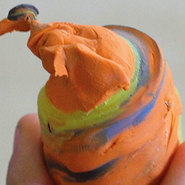 ‘We realised the children were very interested in the bird and bird sounds. They were drawn to it and began to respond to its calls,’ says senior atelierista Teresa Grimaldi. ‘The investigation started in a very quiet way with us introducing binoculars for the children to look at birds and sound recorders for them to try and capture bird sounds in the nursery garden and forest. They remained fascinated by the plastic crow, which some children started to make things for. Gradually the children’s interests evolved and the project, rather than being linear, developed many layers, almost as in the way a nest is built.’
‘We realised the children were very interested in the bird and bird sounds. They were drawn to it and began to respond to its calls,’ says senior atelierista Teresa Grimaldi. ‘The investigation started in a very quiet way with us introducing binoculars for the children to look at birds and sound recorders for them to try and capture bird sounds in the nursery garden and forest. They remained fascinated by the plastic crow, which some children started to make things for. Gradually the children’s interests evolved and the project, rather than being linear, developed many layers, almost as in the way a nest is built.’
BUILDING A NEST
The chance find of a musical egg-shaped shaker led children to speculate what may be in it and whether it belonged to the crow. They felt compelled to protect the egg and brought twigs and pine cones from the garden to build around it, and started to tell stories of nesting and eggs hatching.
The educators began to add provocations such as a real bird’s nest and pictures of spectacular nests built by birds and insects. ‘This sparked the idea of creating a nest and a garden in the atelier. The children wanted to bring the outdoors in. It felt like they had got a new home with the nursery move and they wanted to replicate it on a small scale,’ says Ms Grimaldi.
A wooden palette was brought into the atelier for the bird garden and children started to collect natural materials to build with. ‘Lots of stuff was brought back from Forest School, including a lot of moss, which was dewy and moist and lovely to work with,’ Ms Grimaldi says. ‘Children also added branches and woven ivy.’ Austin commented, ‘Bird needs his garden so he can lay his eggs. He lays his eggs on the glue.’
Over time the children built and collected, shaped and sculpted, painted and wove to assemble a construction that grew into a two-metre-high Bird Garden. ‘It has kept evolving with different skins, such as tissue paper and PVA glue and paint to create many layers and textures,’ Ms Grimaldi adds.
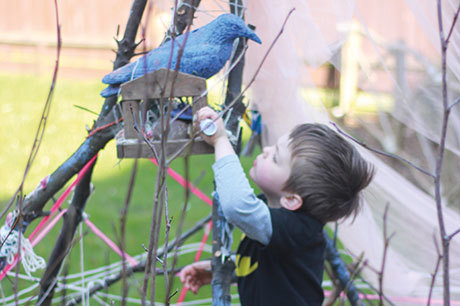
Pedagogical lead Deb Wilenski recalls the growth of the Bird Garden, ‘It was extraordinary to see it begin as a horizontal structure and then return to find it had been built up vertically, with so many complex layers, and was eventually big enough for the children to inhabit.’ One child realised there may be a way inside the Bird Garden and crawled inside while other children peeked through and then decided to try themselves.
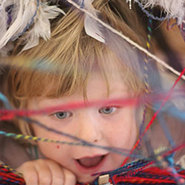 ‘Role play around being a bird then started to happen, with children pretending to be sleeping birds or wanting feeding, and signalling this with bird sounds. Children would circle around and bring bits, such as pieces of tissues, back to feed the baby birds with,’ says Ms Grimaldi. ‘Sometimes a child would go inside with a pencil and paper for a quiet place to draw or research.’ Leo pretended to be ‘the tiniest baby bird, and I need to be looked after’, while Etta was a baby bird that hadn’t learnt to fly.
‘Role play around being a bird then started to happen, with children pretending to be sleeping birds or wanting feeding, and signalling this with bird sounds. Children would circle around and bring bits, such as pieces of tissues, back to feed the baby birds with,’ says Ms Grimaldi. ‘Sometimes a child would go inside with a pencil and paper for a quiet place to draw or research.’ Leo pretended to be ‘the tiniest baby bird, and I need to be looked after’, while Etta was a baby bird that hadn’t learnt to fly.
Children continued to tell lots of stories, with Scarlett narrating, ‘The little girl stayed at there and did nothing. And stayed all snugly and warm.’
Ms Wilenski observes, ‘It’s wonderful that the idea of being still and settled in a nest comes out in a story. Doing nothing, or stopping just to feel cosy, might not sound like an important story, but it is. It’s something we are making more and more room for in the nursery day.’
FEATHERED FRIENDS
A taxidermy herring gull in a glass case was borrowed from the Booth Museum in Brighton and offered to the children to see if they were interested in other birds. They immediately asked whether it was alive or dead and used stethoscopes to listen for its heartbeat through the glass.
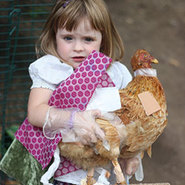 Children thought it may be in prison and drew windows on the glass with chalk paint to try to allow it to escape. ‘The children really wanted to touch the bird so I brought in an old taxidermy partridge, gull and hen that they could handle without worrying about damage. Children would lovingly carry the hen like a real one and developed a strong emotional connection with it,’ says Ms Wilenski.
Children thought it may be in prison and drew windows on the glass with chalk paint to try to allow it to escape. ‘The children really wanted to touch the bird so I brought in an old taxidermy partridge, gull and hen that they could handle without worrying about damage. Children would lovingly carry the hen like a real one and developed a strong emotional connection with it,’ says Ms Wilenski.
‘Eventually the heads fell off the partridge and gull, but what looked like damage was in fact a brilliant opportunity. The children made new heads for the birds and brought to life species that couldn’t be found in any of their bird books.’
Children became ‘bird doctors’ with special gloves and bandages, with even the plastic crow becoming wrapped in tape. They made hospital bird beds and cared for the birds.
‘Each time we added more bird specimens, films, reference books and recordings of birds, the children responded in many expressive ways,’ Ms Grimaldi recalls. ‘They researched the birds’ identities, made music, drawings, sculptures and food for the birds.’ They speculated why birds have wings and feet and thought about birds flying to other places. ‘If you fly on an aeroplane you might see the other bird that’s far, far away,’ said Etta. While Sara mused, ‘I wish I have wings sometimes and could fly everywhere over the mountains.’
HATCHING OUT
After six months, it was decided that the children should hatch their own chicks. They got an incubator and 18 eggs. Following a visit to the Booth Museum, a group of children decided that they wanted to make their own bird museum with their sculptures, Bird Garden, bird beds, pictures and other artefacts all in one room. The incubator was transferred into it to become a live exhibit.
‘The children were fascinated and drew pictures of the incubator and what they imagined inside the eggs. Some expected them to hatch the next day. Once they realised that they would have to wait, they made a chart and tried to predict when they would hatch. In the end the first hatched on a weekend and they missed it, but we posted a photo on the parents’ Facebook page and the children knew something exciting had happened. In the end they saw lots hatch.’ Max observed, ‘Birds don’t hatch just in one day. You have to wait forever.’
Four chickens were kept and the children named them. It was found that three were cockerels, so they were exchanged for black hens. They roam the garden and the children care and make toys for them. They even have music played to them and have been introduced to the taxidermy hen.
When the children moved to school it was decided to leave the Bird Garden and museum to see how the new cohort would interact with them. A strong interest in birds remains, and elements of the project continue to evolve. ‘Children still visit the bird museum as a creative space and I sometimes go in on my break. It’s so relaxing with the bird sounds being played on a loop,’ says Ms Wilenski. ‘We made a book of the project as a gift to the children when they moved to school. It really felt like they were fledglings leaving the nest.’
Books based on the children’s projects are at http://onreflectionpublishing.co.uk
BOOK CORNER
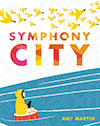 Symphony City by Amy Martin
Symphony City by Amy Martin
A young girl lost in a big city makes her way home following the rich and vibrant music of the streets.
The Conductor by Laetitia Devernay
Intricate illustrations depict a conductor orchestrating leaves to rustle, whirl, swirl and appear to take flight.
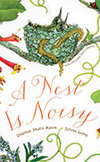 A Nest is Noisy by Dianna Hutts Aston and Sylvia Long
A Nest is Noisy by Dianna Hutts Aston and Sylvia Long
A fascinating look at nests, from the tiny bee hummingbird nests to orangutan nests in the rainforest canopy.
Owl Babies by Martin Waddell
Three baby owls – Sarah, Percy and Bill – awake in their hole in a tree to find their mother has gone.
Follow the Swallow by Julia Donaldson
The friendship between a blackbird and a swallow who find aspects of each other’s lives difficult to believe.
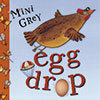 Egg Drop by Mini Grey
Egg Drop by Mini Grey
An amusing story about an egg that wanted to fly.
How to Heal a Broken Wing by Bob Graham
Will finds and nurses a bird with a broken wing back to health, before setting it free to soar above the city again.
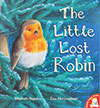 The Little Lost Robin by Elizabeth Baguley
The Little Lost Robin by Elizabeth Baguley
Hare loves listening to his friend Little Robin’s bright, cheerful songs, but she goes missing after a terrible storm.
The Odd Egg by Emily Gravett
Duck is delighted to find an egg to look after, but the other birds think it’s a very odd egg.
FACTUAL BOOKS
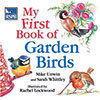 My First Book of Garden Birds by Mike Unwin and Sarah Whittley
My First Book of Garden Birds by Mike Unwin and Sarah Whittley
Discover and identify common garden birds.
Collins Complete Guide to British Birds by Paul Sterry
A photographic guide and information on habitat, songs and calls.
Haynes Chicken Manual by Laurence Beeken
A step-by-step guide to keeping chickens.









